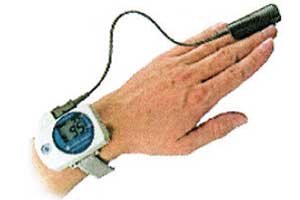- Home
- Editorial
- News
- Practice Guidelines
- Anesthesiology Guidelines
- Cancer Guidelines
- Cardiac Sciences Guidelines
- Critical Care Guidelines
- Dentistry Guidelines
- Dermatology Guidelines
- Diabetes and Endo Guidelines
- Diagnostics Guidelines
- ENT Guidelines
- Featured Practice Guidelines
- Gastroenterology Guidelines
- Geriatrics Guidelines
- Medicine Guidelines
- Nephrology Guidelines
- Neurosciences Guidelines
- Obs and Gynae Guidelines
- Ophthalmology Guidelines
- Orthopaedics Guidelines
- Paediatrics Guidelines
- Psychiatry Guidelines
- Pulmonology Guidelines
- Radiology Guidelines
- Surgery Guidelines
- Urology Guidelines
Oximetry identifies which snoring children shall benefit from adenotonsillectomy

The results of nocturnal oximetry can be used for identification of children having sleep-disordered breathing (SDB) who are likely to benefit from adenotonsillectomy, according to a new study published in the journal Pediatrics.
Athanasios G. Kaditis, National and Kapodistrian University of Athens, Greece, and colleagues conducted the study to evaluate the efficacy of adenotonsillectomy (T/A) in children with SDB in a controlled study using oximetry. They hypothesized that children with SDB and abnormal nocturnal oximetry will have improved hypoxemia indices after T/A.
"Adenotonsillar hypertrophy leading to increased upper airway resistance is the main pathogenetic mechanism of obstructive SDB in children. But the efficacy of adenotonsillectomy in otherwise healthy children with SDB related to pharyngeal lymphoid tissue hypertrophy has not been assessed in randomized controlled trials by using oximetry, write the researchers.
Also Read: Congenital heart disease screening by pulse oximetry reduces infant deaths
For the study, the investigators randomly assigned children with snoring and tonsillar hypertrophy (4–10 years old) who were candidates for T/A to 2 oximetry sequences (baseline and 3-month follow-up): (1) oximetry immediately before T/A and at the 3-month follow-up, which occurred postoperatively (T/A group); or (2) oximetry at the initial visit and at the end of the usual 3-month waiting period for surgery (control group).
Outcomes were (1) proportion of subjects with McGill oximetry score (MOS) >1 at baseline acquiring MOS of 1 at follow-up and (2) proportion of subjects achieving oxygen desaturation (≥3%) of hemoglobin index (ODI3) <2 episodes per hour at follow-up if they had ODI3 ≥3.5 episodes per hour at baseline.
Key Results:
- One hundred and forty children had quality oximetry tracings.
- Over the three-month study period, the percentage of children with an abnormal baseline McGill oximetry score (MOS >1) who achieved a normal MOS did not differ significantly between the adenotonsillectomy group and the control group.
- The median decline in the number of episodes per hour of oxygen desaturation of 3% or greater (ODI3) by nocturnal oximetry between baseline and follow-up was significantly greater in the adenotonsillectomy group (3.2) than in the control group (1.7).
- Moreover, children in the adenotonsillectomy group were significantly more likely than children in the control group to normalize their ODI3 at follow-up, after adjusting for baseline ODI3, age, sex and presence of obesity.
- A preoperative ODI3 of 3.5 episodes per hour or greater was associated with attainment of normal ODI3 in about 40% of patients after adenotonsillectomy.
- Three children with elevated ODI3 needed to undergo adenotonsillectomy to prevent two or more ODI3 episodes per hour in one child at the three-month follow-up, that is, the number needed to treat was three.
- Children in the adenotonsillectomy group had significantly greater improvements in disease-specific quality-of-life scores between baseline and three months than did children in the control group.
"An ODI3 that is not elevated does not necessarily exclude the need for treatment, because the impaired quality of life improves post-adenotonsillectomy regardless of the severity of nocturnal hypoxemia and obstructive apneas or hypopneas are not always accompanied by oxygen saturation drops," write the authors.
"The present randomized controlled study reveals that nocturnal oximetry can be used in community settings to identify children with snoring and tonsillar hypertrophy who are likely to have a resolution of nocturnal intermittent hypoxemia after undergoing adenotonsillectomy," they conclude.
For further reference log on to 10.1542/peds.2017-3382

Disclaimer: This site is primarily intended for healthcare professionals. Any content/information on this website does not replace the advice of medical and/or health professionals and should not be construed as medical/diagnostic advice/endorsement or prescription. Use of this site is subject to our terms of use, privacy policy, advertisement policy. © 2020 Minerva Medical Treatment Pvt Ltd